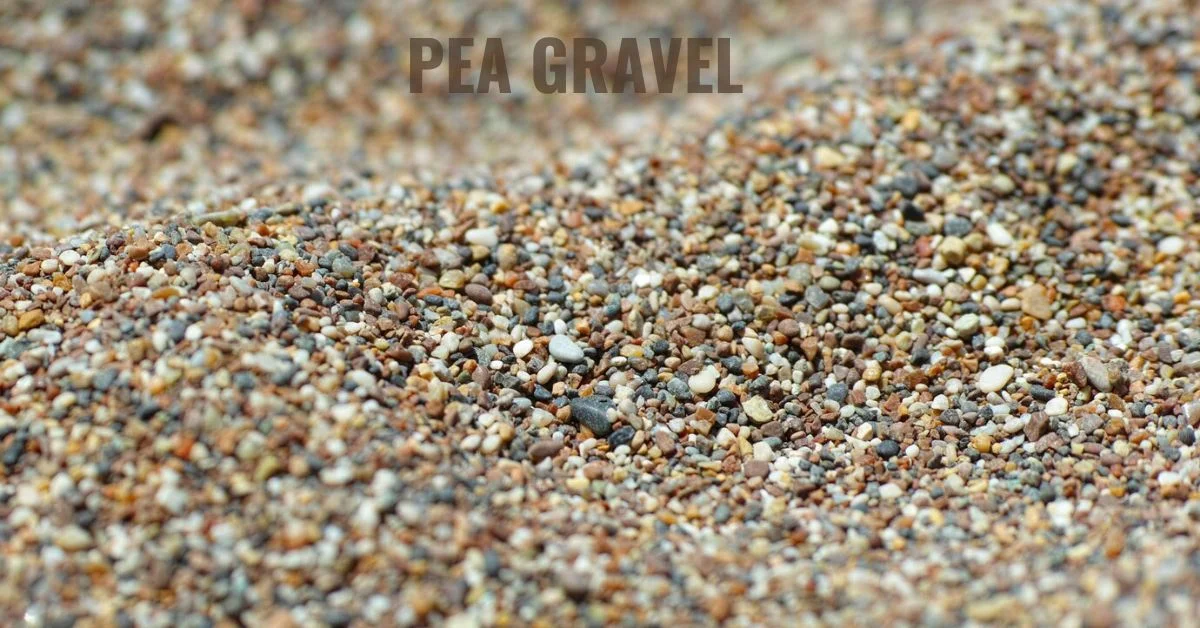Introduction to Pea Gravel
Are you looking to enhance your outdoor space or improve drainage around your home? Pea gravel might just be the solution you’ve been searching for. This versatile and visually appealing material is more than just a pretty face; it offers a range of benefits that make it a popular choice among homeowners and landscapers alike. From creating pathways to filling in flower beds, pea gravel can transform any area into an attractive focal point while providing practical advantages. In this guide, we’ll dive deep into everything you need to know about pea gravel—from its composition and uses to installation tips and creative landscaping ideas. Let’s uncover the charm of this small but mighty stone!
Composition and Characteristics of Pea Gravel
Pea gravel is a small, rounded stone that typically measures between 1/8 to 3/8 inches in diameter. This type of gravel gets its name from its resemblance to peas. It’s primarily composed of naturally occurring stones, often made from granite, limestone, or river rock.
The smooth shape and size make it easy to walk on and handle. This characteristic also lends itself well to drainage applications since water can flow freely around the stones without causing clogs.
Pea gravel comes in various colors, including earthy tones like browns and grays as well as vibrant hues such as reds and blues. Its versatility makes it popular for both aesthetic landscaping projects and functional uses like driveways or pathways.
Another notable feature is its ability to compact under pressure while still allowing air circulation within the soil beneath it. This quality supports plant growth when used in garden beds or surrounding trees.
Common Uses of Pea Gravel
Pea gravel is versatile, making it a popular choice for numerous applications. One of its most common uses is as a decorative ground cover in gardens and pathways. Its smooth texture and appealing colors add charm to outdoor spaces.
Homeowners often use pea gravel in driveways. It provides excellent drainage while still being easy to walk on or drive over.
Another practical application is around flower beds. The material helps reduce weed growth, allowing plants to thrive without competition.
For those looking to enhance their landscaping, pea gravel serves well for creating borders and edging around patios or ponds. This creates defined areas within the yard while maintaining an organic look.
Many people enjoy using pea gravel in playgrounds due to its softness underfoot, providing a safe surface for children at play without compromising aesthetics.
Advantages and Disadvantages of Using Pea Gravel
Pea gravel is known for its versatility and aesthetic appeal. One major advantage is its smooth texture, making it comfortable to walk on barefoot. Its rounded stones also create an attractive appearance in landscaping projects.
Another benefit is excellent drainage properties. Pea gravel allows water to flow through easily, reducing the risk of pooling or flooding in your garden or pathway.
However, there are some disadvantages to consider. Being lightweight means pea gravel can shift over time, especially under heavy foot traffic or during storms. Regular maintenance may be necessary to keep it looking tidy.
Weeds can also penetrate pea gravels layers if not adequately managed with landscape fabric underneath. This could lead to extra work in maintaining a clean look throughout your outdoor space.
Choosing the Right Type of Pea Gravel for Your Project
Selecting the right type of pea gravel can significantly impact your project’s success. Start by considering the size of the gravel stones. Pea gravels typically ranges from 1/8 to 3/8 inches, which makes it ideal for various applications.
Next, think about color and appearance. Pea gravel comes in a variety of hues—from earthy browns to vibrant blues—allowing you to match or contrast with existing landscaping elements seamlessly.
Also, evaluate the intended use. For pathways or driveways, opt for more compact options that provide stability underfoot. If you’re creating decorative features like flower beds or water gardens, lighter varieties can enhance visual appeal without overshadowing plants.
Check local availability and pricing since these factors may influence your choice as well. Each detail plays a crucial role in achieving your desired outcome—so take time to choose wisely!
Installation and Maintenance Tips for Pea Gravel
When installing pea gravel, proper preparation is key. Start by clearing the area of any debris or vegetation. This ensures a clean base that allows for optimal drainage.
Next, lay down landscaping fabric to prevent weeds from poking through. Make sure it overlaps at the seams for complete coverage.
Spread your pea gravels evenly, aiming for a depth of about 2 to 3 inches. This thickness provides both aesthetics and functionality while allowing water to flow easily.
Maintenance is straightforward. Rake the surface occasionally to keep it level and remove debris like leaves or twigs that may accumulate over time.
If you notice any areas where the gravel has shifted or thinned out, simply add more as needed to maintain that smooth appearance.
Regularly checking for compacted spots will also help in keeping your area looking fresh and inviting without too much effort on your part.
Creative Ways to Incorporate Pea Gravel in Landscaping
Pea gravel offers versatile solutions for landscaping projects. One creative approach is to use it as a decorative ground cover in garden beds. This not only suppresses weeds but also adds texture and color.
Consider using pea gravels to define walking paths or borders around flower beds. Its smooth, rounded stones create an inviting surface that is easy on the feet.
Incorporating pea gravels into fire pits can enhance aesthetics while providing excellent drainage. It’s perfect for creating a rustic outdoor lounge area.
For those looking to elevate their water features, sprinkle pea gravels around ponds or fountains. This helps with filtration and adds visual interest without overwhelming the space.
Try combining pea gravel with stepping stones for added charm in your garden layout. The contrast between materials creates an engaging pathway that draws visitors’ eyes through your landscape design.
Comparison with Other Types of Gravel
When comparing pea gravel to other types of gravel, it’s essential to consider texture and size. Pea gravel’s smooth, rounded stones create a gentle surface that is pleasing underfoot. In contrast, sharp-edged gravels like crushed stone can provide excellent drainage but may be less comfortable for walking.
Another factor is aesthetics. Pea gravels comes in various colors, making it an attractive choice for landscaping projects. Unlike larger rocks or coarse aggregates that might dominate a space, pea gravel offers subtlety and versatility.
Cost also plays a role in the decision-making process. While some specialized gravels can be pricey due to their specific uses or sourcing methods, pea gravels tends to be more affordable and readily available.
Maintenance requirements differ significantly between types of gravel. Pea gravels typically requires less upkeep than others that may compact over time or need regular replenishing.
Safety Precaution
Safety is an essential consideration when working with any type of gravel, including pea gravel. This small-sized stone can be a great addition to your landscape or construction project, but it’s crucial to handle it properly.
When installing pea gravels, wear gloves and a dust mask. The dust created during handling can irritate the skin and respiratory system. Ensure that you have proper footwear too; sturdy shoes will protect your feet from injury while moving heavy bags or equipment.
If you’re using pea gravels in areas where children play or pets roam, take extra precautions. While it’s generally safe for kids and animals, always supervise their activities around loose materials to prevent tripping hazards.
Consider drainage issues as well. Pea gravels has excellent drainage properties but can become slippery when wet. Installing fencing or barriers may help keep high-traffic areas safer during rainy conditions.
By prioritizing safety measures throughout your project, you’ll ensure that both workers and visitors enjoy the beauty of pea gravel without unnecessary risks involved.











